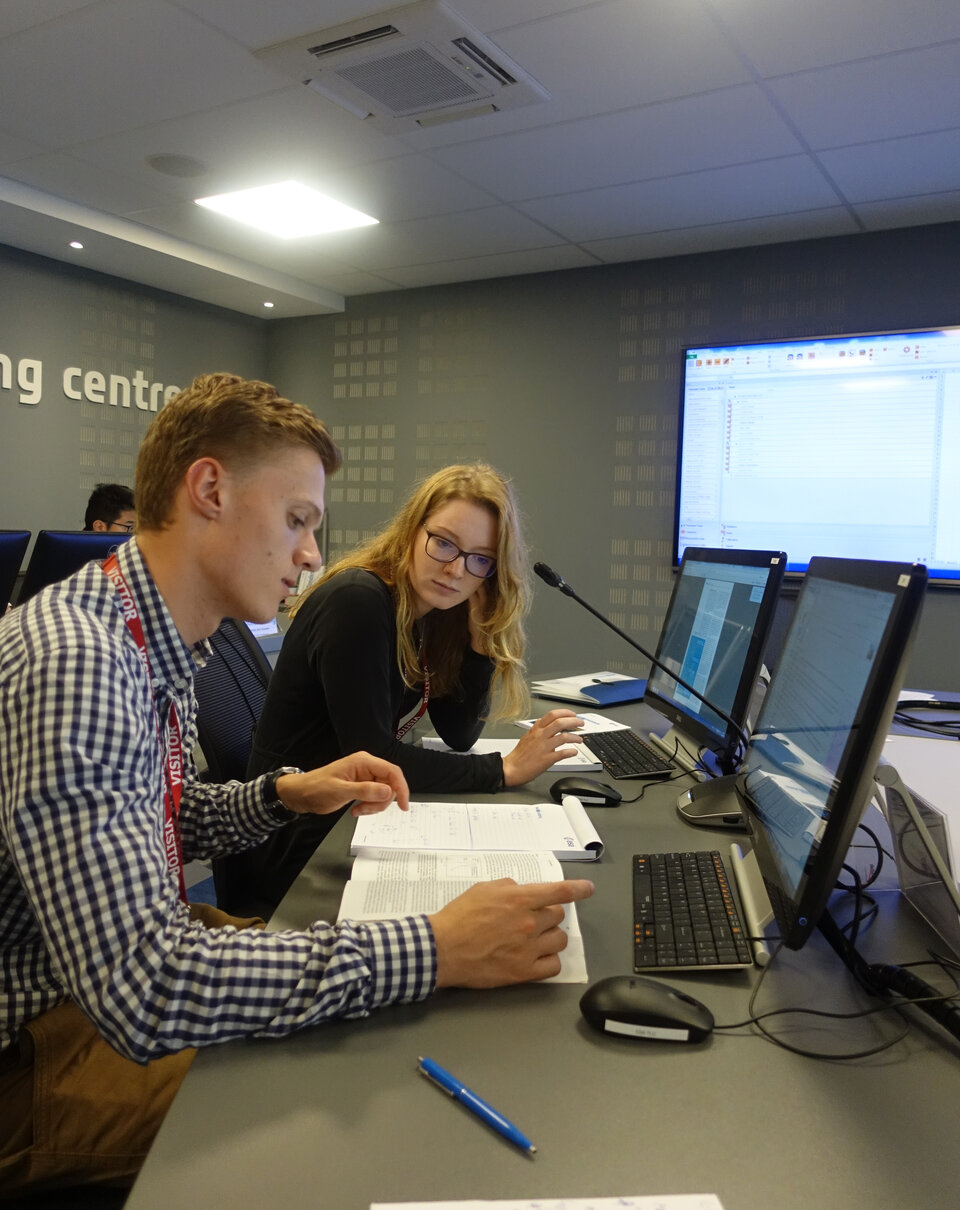Students are called to apply for the 2018 concurrent engineering challenge
ESA’s Education Office is looking for 30 talented and motivated university students from an ESA Member or Associate State with an engineering or physics background to take part in the Concurrent Engineering Challenge 2018 from the ESA Academy’s Training and Learning Facility in ESEC-Galaxia, Transinne, Belgium.
Following the success of the first Concurrent Engineering Challenge organised in 2017 by ESA’s Education Office and Systems and Concurrent Engineering Section, a second edition will be held from 22 to 26 October 2018.
Four groups of maximum 30 University students will participate in the Concurrent Engineering Challenge 2018: one directly from the ESA Academy’s Training and Learning Facility and the others from different Concurrent Design Facilities (CDF) located in three European universities, respectively: Lulea University of Technology (Sweden), Delft University of Technology (The Netherlands) and Universidad Politécnica de Madrid (Spain).
Concurrent engineering is a method of designing and developing products in the space sector. Contrary to the traditional design methods, in Concurrent Engineering, all subsystems are designed simultaneously, as specialists of all disciplines and subsystems collaborate all together working in joint sessions conducted at in a dedicated facility named Concurrent Design Facility (CDF). This is a far more efficient way of designing, but it has its own challenges as well. Solutions in one area that could affect the design in another must be identified and communicated instantly. Although concurrent engineering is a more complicated process to begin with, in effect it allows mistakes to be identified earlier, therefore reducing the design time.

Through this Challenge, students complement what they are learning at university by familiarising with the concurrent engineering approach and its benefits, but also learn how ESA assesses technical and financial feasibility of space missions. Europe’s leadership in space depends upon its ability to continue developing world-class satellites. To do that, a new generation of space engineers and scientists needs to be trained.
Selected students in each CDF will be supervised by two system engineers and will be divided into small teams of two or three to cover the following disciplines: structures, configuration, power, mechanisms, thermal, attitude and orbit control system for a satellite (AOCS), propulsion, trajectory analysis and communications/data handling. Students within each small team will create a subsystem concept in order to later achieve the mission parameters using the Concurrent Engineering approach.
The four groups of university students located around Europe will be given the same specific mission to be designed in 4 days. The groups will not compete against each other. Instead, they will use video conferencing to share each day’s progress, raise any particular difficulties they are facing, and receive helpful inputs from the other participants. At the end of the week, each group will present their final design to the three other groups.

A few weeks before the Challenge, all selected students will be offered by ESA the opportunity to participate in an online tutorial of the Open Concurrent Design Tool (OCDT) to get familiar with the tool and get ready for the Challenge!
The deadline for applications to participate in the Concurrent Engineering Challenge 2018 from ESA Academy’s CDF is 7 September 2018, 23:59 CET.
In parallel to this ESA’s selection process, the three European universities involved in the Concurrent Engineering Challenge 2018 are organising their own student selection.
Who can apply?
In order to participate, students must fulfil the following criteria at the time of application:
- be aged between 18 and 32;
- be a citizen of an ESA Member or Associate State*;
- be enrolled as a full-time Master or PhD student in a university (not graduating before the challenge);
- be studying an engineering subject or physics.
The selected students will be sponsored by ESA. This will cover accommodation and meals as well as up to 200 Euros for travelling to Transinne, Belgium.
How to apply?
- Fill in the application form;
- Select preferred subsystems;
- Upload a motivation letter (PDF, maximum 1 page, no images);
- Upload a CV (PDF, maximum 2 pages, no images);
- Upload a formal recommendation letter (PDF, maximum 1 page, including signature, no images) from a university professor or an academic supervisor of current University;
- Upload an official copy of academic records (PDF, in English, with the university stamp).
All answers and documents should be in English (except academic records if not available).
For more information, please contact esa.academy@esa.int


